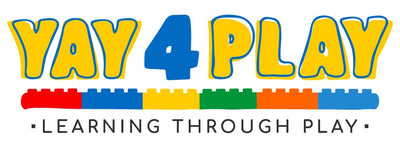As parents and caregivers, we all want to give our children the best start in life. One of the most important things we can do to support our children's learning and development is to provide opportunities for play.
One of the best tools for supporting play and learning in young children is the busy book.

What is a Busy Book?
A busy book is a type of interactive book designed for toddlers and young children.
It contains a variety of activities and challenges that encourage children to engage in hands-on play.
Busy books can be themed around different topics, such as numbers, colors, animals, or vehicles and can be customized to suit the interests and abilities of each child.
Busy books come in different format and can also include educational games and a way of engaging with reading!
Why are Busy Books Important for Toddlers?
Toddlers are at a critical stage in their development and they need opportunities to explore, experiment, and engage in hands-on play.
Busy books provide a safe and engaging way for toddlers to do just that.
Here are some of the ways busy books support toddlers' learning and development:

1. They Encourage Fine Motor Skills
Busy books are designed to be manipulated and explored by little hands, which makes them the perfect tool for developing fine motor skills.
Activities help children develop the hand-eye coordination, dexterity and finger strength they need for future tasks such as writing, drawing and using utensils.
2. They Support Cognitive Development
Busy books are filled with different activities and challenges that encourage children to use their problem-solving skills and cognitive abilities.
For example, they can help children develop their memory and recognition skills as well as helping them learn about spatial relationships and cause-and-effect.

3. They Foster Language Development
Busy books can also be used to support language development in young children.
Activities such as naming and identifying different objects and animals or making animal sounds, can help children develop their vocabulary and language skills.
4. They Promote Creativity and Imagination
Busy books encourage children to use their creativity and imagination to explore different activities and ideas.
This type of play encourages children to use their imaginations to create their own stories and scenarios, which is an important part of their cognitive and social development.

5. They Support Independent Play
Busy books are designed to be played with independently by children, which can help them develop their sense of autonomy and independence.
As children explore the different activities and stories in the busy book, they are developing their self-confidence and learning to problem-solve on their own.
How to Use Busy Books with Toddlers
If you're interested in using a busy book with your toddler, here are some tips to get started:
1. Choose a Book that Suits Your Child's Interests and Abilities
There are many different types of busy books available, so it's important to choose one that suits your child's interests and abilities.
For example, if your child loves animals, a book with a farm or jungle theme might be a good choice. If your child is just learning to count, a book with activities related to numbers might be a good fit.

2. Set Aside Time for Play
Busy books are designed to be played with independently by children, but it's still important to set aside time for play and exploration. If they cannot read, you will need to be more actively involved.
Choose a time when your child is alert and engaged and make sure they have plenty of space to explore the book.
3. Encourage Your Child to Explore
As your child explores the busy book, encourage them to engage with each actively with the storyline.
Ask open-ended questions to help them think about what they're doing and why.

4. Follow Your Child's Lead
It’s up to you to help make the busy book more challenging if necessary OR increase your support and encouragement to help them master the activities.
5. Build on the Learning
Once your child has explored the busy book, look for ways to build on the learning. There are so many exciting ways in which the learning can continue: discuss the themes of the book in a suitable way or ask what the child enjoyed most in the busy book.
In conclusion, busy books are an important tool for supporting play and learning in toddlers. They encourage fine motor skills, cognitive development, language development, creativity and imagination and independent play.
By choosing a book that suits your child's interests and abilities, setting aside time for play, encouraging exploration, following your child's lead, and building on the learning, you can help your child develop important skills and set the stage for a lifetime of learning and discovery + a real love of reading.

What's so special about Build-a-Book?
When selecting toys for kids from the wide range available, consider how a busy book such as our own Build-a-Book can make a real difference to language, motor skills and numeracy development.
The Build-a-Book approach is perfect for children who may struggle with reading or who just need a more engaging way to connect with stories.
This new type of busy book is an ideal choice that goes beyond the classic toy and provides hours of fun - and learning to enjoy books and reading.
Read more about our Build-a-Book here.
Read more about the importance of learning through play clicking here.
